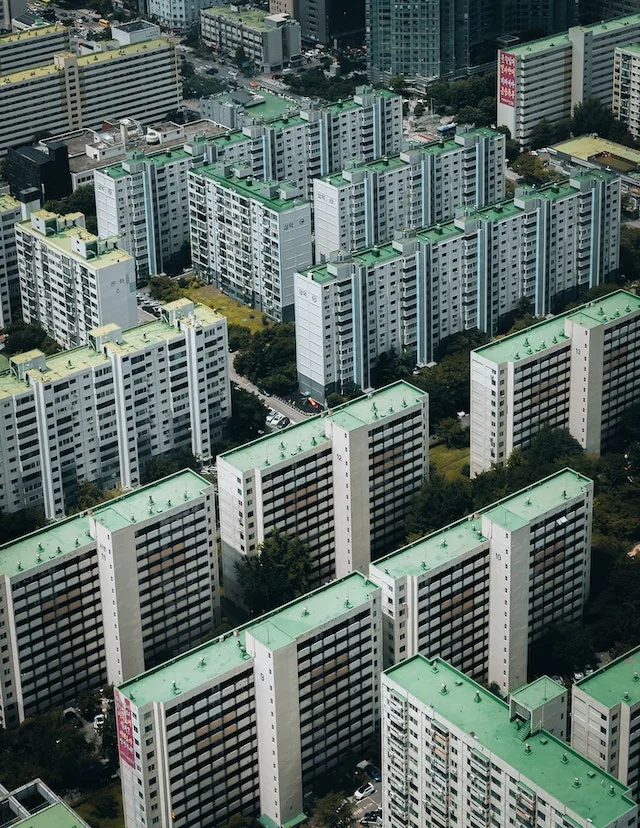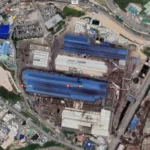South Korea’s urban landscape is undergoing significant changes as the global shift towards hybrid work models pushes people from bustling cities to suburban neighborhoods. To reinvent its urban landscape, the nation can draw inspiration from the United States, where the pandemic-induced migration to suburbs has resulted in a reevaluation of suburban design and development. However, South Korea must also address its own unique challenges, such as the lack of pedestrian-focused paths and the predominance of uniform commercial buildings in new towns. Additionally, understanding the nation’s obsession with apartment complexes in cities is essential to developing suburbs of the future.
Revitalizing Suburban Design
In the United States, developers have successfully converted underutilized assets like office parks and retail malls into mixed-use environments to meet the growing demand for urban amenities within suburban settings. This approach emphasizes walkability, public open spaces, and an integrated mix of uses that foster a deep sense of community. South Korea must adapt these strategies to tackle its challenges in creating pedestrian-friendly towns.
A prominent issue South Korea encounters is the absence of pedestrian-centered paths in new town developments, which can adversely affect walkability and accessibility for residents. A study by the Korea Transport Institute highlights the importance of implementing pedestrian-friendly streets and pathways that promote walking, biking, and other non-motorized modes of transportation. Addressing this issue will not only enhance the overall quality of life for suburban residents but also contribute to a more sustainable urban environment.
Another challenge in South Korea is the prevalence of similar-looking commercial buildings in new towns, which can result in a monotonous and uninspiring suburban landscape. A paper published in the Journal of Urban Design emphasizes the need for developers to create diverse and visually appealing architectural designs that reflect the unique character and culture of each community. This approach will help foster a sense of identity and pride among residents and create more vibrant and engaging public spaces.
South Korea’s Obsession with Apartment Complexes
To fully understand the future of suburban development in South Korea, it is vital to examine the nation’s fixation on apartment complexes. In South Korea, apartment complexes have become synonymous with urban living, offering a sense of security, modernity, and convenience that is highly valued by its residents. According to a study by the Korea Appraisal Board, approximately 60% of the nation’s housing consists of apartments, with the percentage being even higher in major cities like Seoul.
Several factors contribute to the popularity of apartment complexes in South Korea. One key reason is the rapid urbanization and industrialization that the country experienced during the latter half of the 20th century. As cities expanded and the population increased, the demand for affordable and efficient housing solutions became paramount. Apartment complexes provided a way to accommodate the growing population while optimizing the use of limited urban land.
Another factor is the social status associated with living in an apartment complex. In South Korea, apartments are often seen as a symbol of modernity and affluence, with the price and location of an apartment reflecting one’s social standing. This perception has fueled a competitive real estate market, with developers constantly striving to create bigger, taller, and more luxurious apartment complexes.
However, the strong preference for apartment living has also led to several challenges and negative aspects. In recent years, the increasing density of apartment complexes has resulted in a lack of low-rise buildings and street-level shops, which can contribute to the vibrancy and diversity of a neighborhood. Additionally, despite the convenience and sense of community that apartment complexes may provide, many residents have reported feeling isolated and disconnected from their neighbors due to the large scale and impersonal nature of these developments.
To address these issues and create more sustainable and livable communities, South Korea must reassess its approach to urban planning and prioritize the development of diverse housing options and mixed-use neighborhoods. This includes promoting the construction of low-rise buildings and street-level shops that can foster a more intimate and interactive environment for residents. By doing so, communities will benefit from greater walkability, increased social interaction, and a stronger sense of identity and belonging.
Moreover, integrating green spaces, parks, and pedestrian-friendly pathways into new town developments can significantly improve the overall quality of life for residents, while also promoting environmental sustainability. Encouraging the development of alternative housing options, such as townhouses, single-family homes, and small-scale apartment buildings, can also help to create more diverse and inclusive communities that cater to the varying needs and preferences of residents.
In conclusion, by shifting the focus away from large-scale apartment complexes and towards more diverse and vibrant urban environments, South Korea can address the challenges associated with its current urban planning approach and create sustainable, dynamic, and livable communities for its residents.
Reimagining the Suburbs for a Changing South Korea
As South Korea’s urban landscape continues to evolve, it is crucial to consider the nation’s unique cultural preferences and challenges to develop suburbs that cater to the needs of its residents. By learning from the successes of suburban revitalization in the United States and addressing the specific issues faced in South Korea, developers and urban planners can create vibrant, pedestrian-friendly, and diverse suburban communities that offer a high quality of life.
One approach to rethinking South Korea’s preference for apartment complexes is to create mixed-use communities that combine diverse housing options and the benefits of suburban spaces. This can be achieved by developing low-rise buildings, townhouses, and small-scale apartment complexes that integrate various amenities, such as retail spaces, parks, and recreational facilities, within a pedestrian-friendly environment.
In addition, addressing the uniformity of commercial buildings in new towns can enhance the appeal and distinctiveness of suburban neighborhoods. Developers can prioritize the use of unique architectural designs and materials that reflect the local culture and heritage, promoting a sense of pride and belonging among residents.
Furthermore, to ensure long-term success and sustainability, public and private entities must collaborate in the planning and implementation of these suburban transformations. This includes involving local communities in the decision-making process to create suburbs that resonate with residents and meet their specific needs and preferences.
Lastly, it is essential to promote sustainable urban development by incorporating eco-friendly practices, such as the use of energy-efficient building materials, green spaces, and public transportation, into suburban designs. This will not only improve the overall quality of life for residents but also contribute to the global efforts in mitigating climate change.
Conclusion
The future of South Korea’s suburbs lies in striking a balance between embracing the nation’s cultural preferences and adopting innovative design strategies that prioritize pedestrian-friendly paths, diverse architectural styles, and alternative housing options. By learning from international examples and addressing local challenges, South Korea can successfully pioneer the suburbs of tomorrow and create communities that offer the best of both urban and suburban living.



